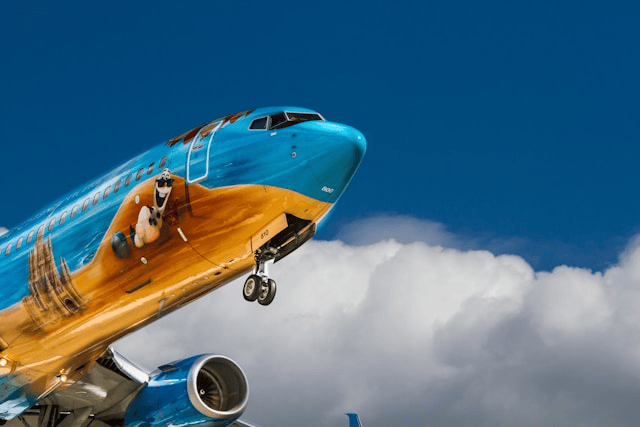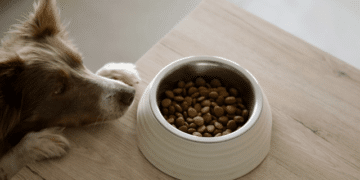Flying with a pet can feel overwhelming, especially if it’s your first time. Between airline rules, paperwork, and your pet’s comfort, there’s a lot to consider. But with the right planning and a calm approach, flying with a dog or cat can be a smooth, safe, and even positive experience for both of you.
Whether you’re relocating, vacationing, or visiting family, this guide on how to travel by plane with a pet covers everything you need from airline regulations to packing a pet travel kit. Here’s how to get ready for takeoff, paw by paw.
Know Your Airline’s Pet Policy
Before booking your ticket, research the airline’s specific rules around pet travel. Policies can vary widely depending on the carrier and destination.
Things to check:
-
In-cabin vs. cargo travel: Smaller pets (typically under 20 lbs including carrier) may fly in-cabin under the seat in front of you. Larger pets must travel as cargo.
-
Breed restrictions: Some airlines restrict snub-nosed (brachycephalic) breeds like pugs or Persian cats due to breathing risks at high altitudes.
-
Pet travel fees: Expect to pay between $95–$200 per flight for in-cabin pets. Cargo transport often costs more.
-
Health requirements: Most airlines require a recent health certificate (within 10 days of travel) and proof of vaccinations.
-
International flights: Destinations outside your home country may have quarantine rules, import permits, and additional vaccinations.
Call your airline directly or check their website for the most up-to-date airline pet travel tips and documentation requirements.
Prepare Your Pet for Travel
The more familiar your pet is with their travel carrier and the noises of travel, the less stressed they’ll be on the big day.
Here’s how to prepare:
-
Visit the vet: Get a checkup to ensure your pet is healthy enough to fly. Ask your vet about anti-anxiety solutions or sedation (note: sedation is often discouraged for in-cabin and cargo travel).
-
Carrier training: Introduce the carrier weeks in advance. Let your pet eat, sleep, and relax in it so it feels safe and familiar.
-
Update ID and microchip: Make sure your pet’s collar tag and microchip have current contact information, just in case.
-
Practice travel routines: Short car trips or visits to busy areas can help desensitize your pet to noise and movement.
Preparing your pet in advance is one of the most important steps in how to travel by plane with a pet safely and comfortably.
Choose the Right Carrier
Your carrier must meet the airline’s requirements and be a comfortable space for your pet during the flight.
Carrier checklist:
-
Airline-approved dimensions: Check your airline’s size limits for in-cabin pet carriers.
-
Ventilation: Ensure there’s breathable mesh on at least two sides.
-
Leak-proof base: Prevent messes from leaking onto the cabin floor.
-
Security: Zippers or latches should close tightly to prevent escapes.
-
Comfort: Add a soft blanket or pad that smells like home.
Soft-sided carriers are typically better for in-cabin use, while hard-sided kennels are required for pets traveling as cargo.
Pack a Pet Travel Kit
Create a small travel bag with all the essentials your pet might need while in transit.
Include:
-
Food and collapsible bowl
-
Water bottle or ice cubes in a dish (check TSA rules)
-
Leash and harness
-
Pee pads or travel litter tray
-
Waste bags
-
Comfort item (toy or blanket)
-
Paper towels and wipes (for messes)
-
Copies of vet records and health certificate
A thorough pet travel checklist ensures you don’t scramble mid-flight to find what you need.
Day of Travel Tips
On the day of the flight, aim to reduce stress for both you and your pet.
Key tips:
-
Feed early: Give a small meal 4–6 hours before takeoff to avoid upset stomachs.
-
Arrive early: Budget extra time for check-in and TSA screenings with your pet.
-
Bathroom break: Take your dog for a walk before going through security. For cats, a disposable litter tray can help.
-
Stay calm: Your pet will sense your mood. Use a calm voice and positive energy.
When going through security, you’ll need to remove your pet from the carrier while the bag is X-rayed. Hold them securely or use a leash and harness to avoid escapes.
In-Flight Considerations
Once you’re on board, your pet’s comfort and safety should remain top priorities.
-
Under-seat placement: Keep the carrier under the seat in front of you at all times.
-
Check-in frequently: Quietly look inside the carrier to ensure your pet is okay.
-
Avoid opening the carrier in flight, even for petting it’s a flight risk!
-
Speak to flight attendants if you have any concerns or need assistance.
If your pet is flying as cargo, alert airline staff and double-check loading confirmation before boarding yourself.
Upon Arrival
After landing, give your pet time to decompress from the flight.
-
Offer water first, then a light meal once they’ve settled.
-
Watch for signs of distress like vomiting, excessive panting, or hiding.
-
Take them to a quiet spot to relax, especially if you’re continuing to another location.
Flying with a dog or cat is tiring for them too. A short nap or gentle cuddle session can help them recover from the stress of travel.
Final Tips and Reminders
Here are a few final airline pet travel tips to keep in mind before booking your next flight:
-
Book direct flights whenever possible to reduce transfer stress.
-
Travel during non-peak hours to avoid crowds and delays.
-
Avoid extreme weather heat and cold can be dangerous for pets in cargo.
-
Choose pet-friendly airlines that have good reputations for animal care.
-
Label your carrier with your contact info and destination clearly.
If you’re still unsure how to travel by plane with a pet confidently, consider consulting a pet relocation service, especially for international moves.
In Conclusion
Traveling with your furry companion doesn’t have to be complicated. With careful preparation, the right gear, and a calm approach, flying with a pet can be a safe and positive experience. Whether you’re taking a short domestic flight or going abroad, these tips will help you stay organized and keep your pet comfortable from takeoff to landing.









